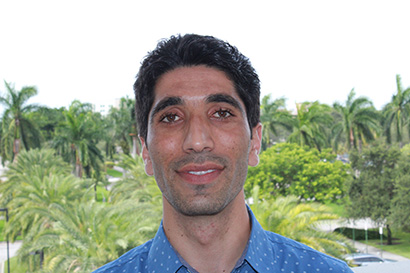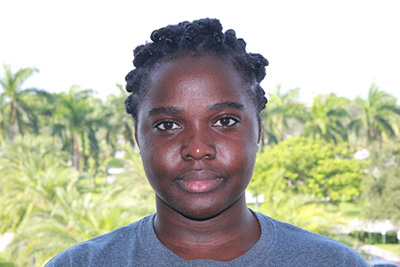Marine and Environment: Cognitive Wireless Radios for Maritime Robotics
REU Mentor: George Sklivanitis, Ph.D.
REU Scholar: Parker Wilmoth
REU Scholar Home Institution: The University of Texas at Tyler
REU Mentor: George Sklivanitis, Ph.D.
REU Scholar: Tariqullah Wardak
REU Scholar Home Institution: Palm Beach State College
REU Mentor: George Sklivanitis, Ph.D.
REU Scholar: Ynes Ineza
REU Scholar Home Institution: Texas Tech University
Wireless communications under the surface of the water is challenging as electromagnetic waves, which are predominantly used for over-the-air communications cannot travel more than a few centimeters through water. Acoustics is usually the preferred option. However, existing acoustic modem technology is mostly limited to point-to-point communications, while for applications that require large numbers of modems to get deployed at different locations in the field, the monetary and energy cost to maintain each modem can become prohibitive. Scatter radio achieves communication by reflection and requires low-cost and low-power analog front-ends. In this work, we propose to develop scatter acoustic underwater wireless sensor networks with the development of modems that consume less than 4 mW for communications and less that 0.5 mW in idle mode. In principle, backscatter communication is implemented with a battery-operated acoustic emitter and receiver, and a battery-free sensor tag. The emitter illuminates the tag with a continuous wave by vibrating a piezoelectric cylinder close to its resonant frequency. To modulate sensor information, the tag typically terminates its own piezoelectric cylinder between two loads; in that way, the incident continuous wave is reflected with altered amplitude and/or phase, according to the load that is selected each time. By switching the impedance of the tag’s piezo cylinder at different rates, we obtain different reflection coefficient values that produce subcarriers, separate from the carrier frequency, which carry binary information bits from the sensor. We built acoustic tag prototypes that are configured to harvest energy from an incident carrier wave at 35.9 kHz and implement switching between two loads and produce two subcarriers at 38.9 kHz and 44.5 kHz. We investigate how polymer-based materials such as epoxy and resin –used to waterproof the piezocylinders— can affect sound absorption and how these materials may change the piezocylinders’ acoustic and electrical impedance underwater. We demonstrate that an acoustic receiver successfully decodes binary information reflected from one acoustic tag in a water tank environment. To improve the decoding capability of our receiver, we first train our receiver on signal data recorded from a simulator that is integrated to the popular Bellhop ray tracer to model multipath underwater acoustic propagation.
Watch video presentation


